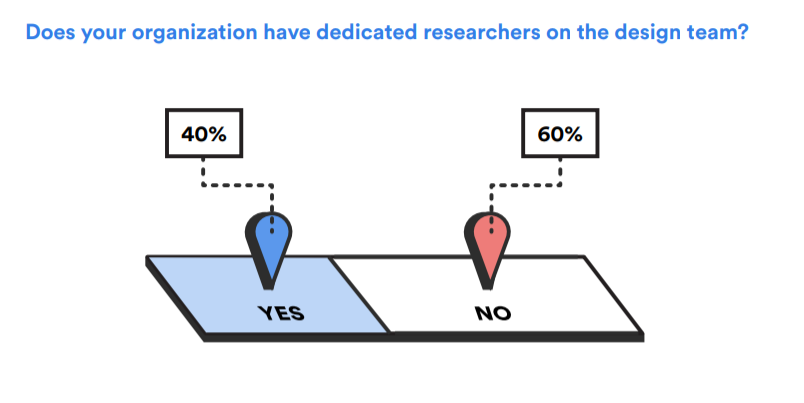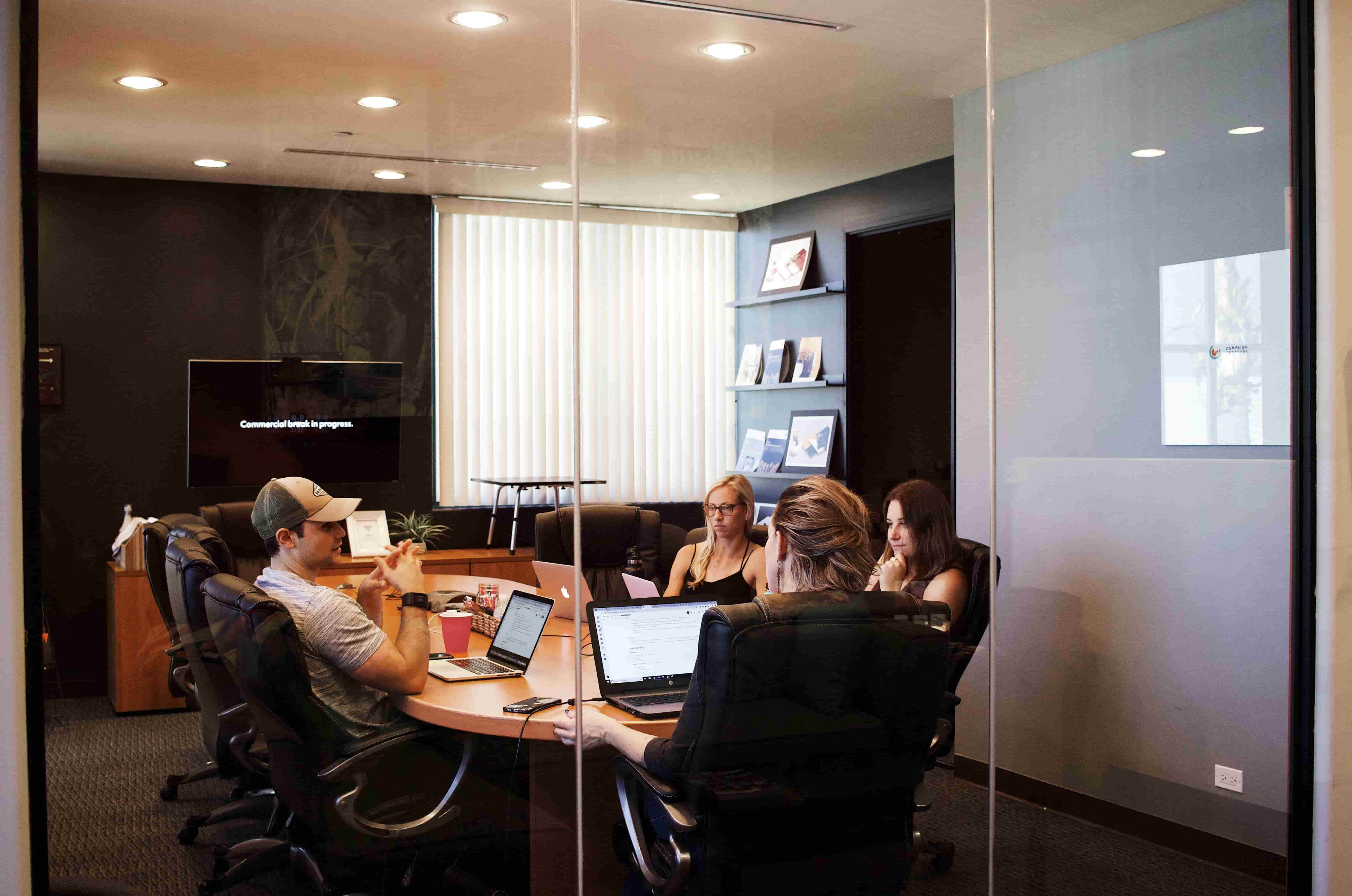No UX designer is a one-man army. Like almost every other working professional, they function better in a team.
Yet the myth of the one-man (one-woman, one-person) army lives on not only in TV tropes but in business as well.
A solitary designer will be hired with the humble expectation of planning, creating, launching, and optimizing the entire spectrum of a user’s experience with the product.
Even if you happen to hire a prodigy who magically wields all those abilities, the sheer amount of work it takes to complete the entire UX design process will overwhelm them.
A more realistic, and effective, approach is to hire a UX team to create your application’s user experience. The work will be reasonably delegated, team members can work together to solve complex problems, and diversity of viewpoints within the team will yield better work.
The rest of this post digs into why hiring a UX team is (almost always) better, and how to assemble a high-performing squad.
The Case for a UX Team
Whether you’re hiring a UX agency or building an in-house crew, you’re more likely to get better results when you work with a full-fledged team. Here’s why.
Diversity of Opinions
In both our personal and professional lives, diversity makes us more creative and more hard-working. Time and time again, research shows that innovation most often rises from an assortment of perspectives.
A solitary designer only sees the project through their point of view, but in a team, each UX professional views the project through the prism of their respective experiences and opinions. By considering and combining divergent ideas, innovation is born.
Even if you’re not looking to create The Next Big Thing, simply having more designers contribute to the project will create a culture of accountability and improve the quality of the final result.
Good, Old Fashioned Teamwork
If you plan on following the human-centered design process — that is researching, ideating, and validating your user experience —you need to divide the work up if you want it to move at anything faster than a snail’s pace.
This has less to do with specialization per se, and more to do with agility and efficiency.
For example, UX research can be an arduous process. Users need to be recruited. Interviews need to be run. The data needs to be analyzed and communicated.
If the work is shared between a couple of team members then it will move faster. And because each team member has a reasonable workload relative to their deadline, they’ll be able to spend more time on their work and deliver higher quality.
Plus, burnout is a thing. Even if one person has the work ethic to do the jobs of 3 people, it doesn’t mean their standards won’t suffer when they’re tired and pushing into hour 60 for the week.
Knowledge Security
Turnover is inevitable —even more so with younger professionals. So what happens when you only hire one designer to oversee the entire user experience design of your product?
When they leave you’re going to have a very hard time transferring all the precious knowledge they’ve accrued during their tenure. But if you have a team, that product knowledge will live on in the other members, making it infinitely easier to onboard new designers.
Who to Recruit for the UX Team
All right, so you’re convinced of building, or hiring, a UX team. The next step is to decide who needs to be on the team. While the field of user experience design is diverse, the idea of a UX team typically encompasses three disciplines:
1. UX design
2. UI / visual design
3. UX research
A quick note on roles versus skills
While it’s certainly true that you want someone highly skilled in a certain area to be doing that work, that doesn’t mean everyone you hire has to be a specialist.
Over the last decade, the availability of UX education has improved, and there are simply more generalists than specialists. That can be a good thing. In a study of highly successful teams, UIE found the highest-performing UX groups focused on the skills of each team member rather than the rigidly defined roles.
So if someone can execute in more than one area, consider that an asset rather than a weakness. The value they can add to your organization just multiplied.
Anyway, here’s the makeup we always recommend to clients for a high-performing UX team:
UX Lead
There's no substitute for experience, and a veteran director of UX or team lead can be the difference between an average outcome and a stellar one.
UX leads know the ropes. They know how to interact with clients (or stakeholders as it were) develop the vision for the project, and plan timelines accordingly.
They act as both composers and planners. In the short term, they ensure that the entire team stays on song and produces something worthwhile. In the long term, they attend to deadlines, anticipate milestones, and make sure the project stays on course.
Focus Areas:
- Client Communication
- Project Management
- Creative Direction
UX Researcher
This is perhaps the most overlooked part of the team. In our State of UX Research Survey, only 40% of respondents said their team included dedicated researchers.
I’ll be honest: we’re biased at DePalma when it comes to user research. We always strive to follow an evidence-based, user-centered design process, and that requires research.
UX researchers study both the market and the actual behavior of the people who will use your application. To be more specific, researchers uncover the habits, preferences, needs, and environmental factors that drive people to behave a certain way.

This information can reveal what people truly want from your application, or whether they would even use a product like yours at all. Suffice it to say, that UX researchers are the eyes and ears of user-centered design. Without them, the project is flying blind.
Focus areas:
- Qualitative Research
- Quantitative Research
- Usability Testing
- Data Analysis
UX Designer
Based on the data gathered by their research-minded colleagues, UX designers map out the experience of the application. Experience in this context mostly means the way humans interact and utilize software.
Since most goals require a series of tasks to be completed, experienced designers align the information in an application to match the progression happening inside the user’s mind.
A series of tasks from start to completion is called a workflow. A simple workflow might look like arrive on the website > navigate to products > choose a product > checkout.
Of course, it must be easy to comprehend how to do each task in a workflow, so UX designers position the information on each screen to be as intuitive as possible.
Focus Areas:
- Interaction Design
- Information Architecture
- Workflows
- Animation / Motion
Visual Designer
Of the entire UX team, the work of the visual designer is perhaps the most readily understood. By with aesthetics, like color, typography, spacing, and patterns, visual designers breathe life into digital productions.
This work may seem superficial, but visual design has a tremendous impact on how people perceive an experience. Humans are enamored with beauty, so if we perceive something to be aesthetically pleasing then we inherently believe it’s easier to use.
Focus areas:
- Design Patterns
- Typography
- Color Palettes
- Iconography
***
Is there ever a time when you don’t need an entire UX team? Sure. If your project is relatively simple, then you don’t need a whole team. If you want to hire a UX designer to make even-paced iterations to one website or product, then you don’t need a team.
But, if you want to design a product from the ground up, or redesign an existing application, then you need to invest in a balanced UX team.





